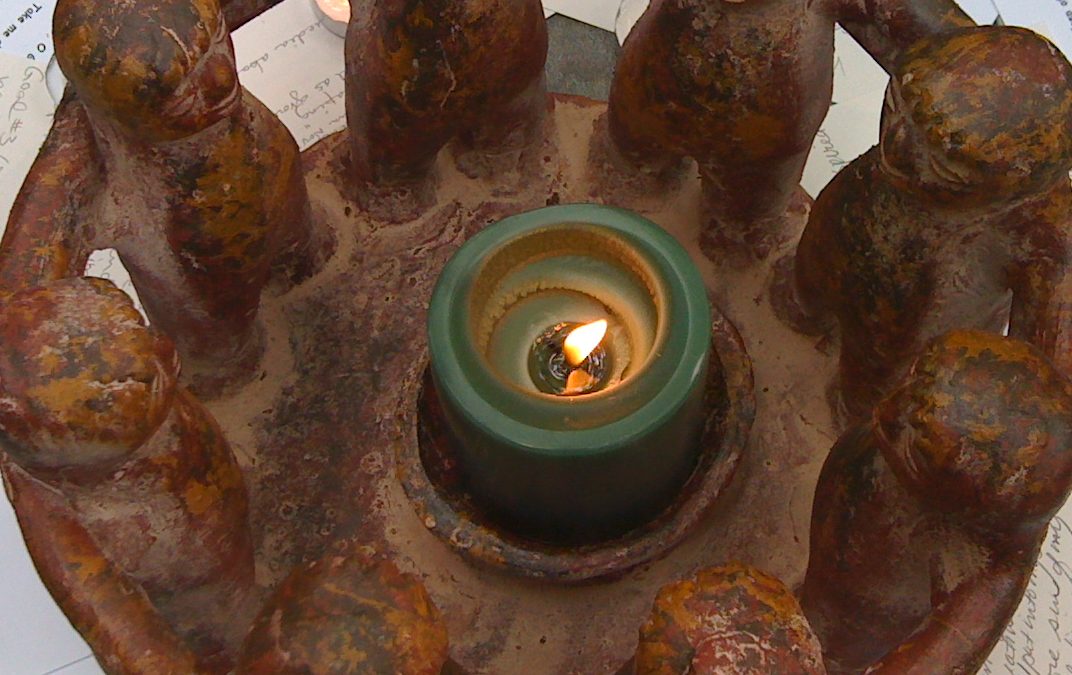As a professional dreamworker I talk to people about how to use their dreams for personal growth and development. But that’s only one part of what I hope people will do with their dreams.
I believe dreams can help us not only with our individual lives, but with our collective experience, as well. Unfortunately, this aspect of dream studies has largely been ignored. We just don’t think collectively, as much as we think individually. Let me give you an example.
During my first week at college, a new friend invited me up to her dorm room. Hanging above her bed was a poster that pictured the earth as seen from space, under which were printed the words, “Love Your Mother.” Eager to make conversation, I said, “So, you’re close to your mom?”
My new friend, as gracefully as she could, pointed out that the poster was a statement about environmentalism, not family ties.
Oops.
The good news is that the friendship flourished, despite my inane remark.
But, like a dream that we revisit over the years, I now look back on that moment and see something besides just a cringe-worthy freshman-year faux pas. My initial blindness to the collective message in that poster’s symbolism mirrors a problem that most of us have when it comes to understanding dreams.
Sigmund Freud popularized dream analysis, but he also pointed us toward the dream for purely personal understanding of our private complexes and conflicts. It’s true…our individual dreams are made up of our individual memories, impressions, and associations. Like a bird building a next from bits of straw plucked up around its tree, we build our dreams of intimate scraps of knowledge that only we can explain or place. Carl G. Jung added the idea of the collective unconscious to dream studies, expanding the art of dreamwork beyond personal symbolism and connotations into broader, more universal themes.
But still, by and large, dreams are looked at primarily as private messages that serve our personal growth and development. But dreams also speak to us on a more global level. Many ancient and aboriginal cultures looked to dreams for collective messages to benefit of the family, tribe, or greater community.
Some more familiar examples of dreams that held messages for the collective include Harriet Tubman’s dreams that she said gave her important information that helped her successfully led hundreds of enslaved people from the American south to freedom up north in the 1800s. and Carl Jung is said to have had precognitive dreams of World War 1. Also, many inventions that have affected the course of history, from the mechanized sewing machine to the periodic table–and even Google, were inspired by dreams.
In everyday life our dreams have mutual benefit when they help us improve our relationships with others, offer fresh perspectives that boost our performance at work, or inspire a poem, story, or song that we share with our family, friends, or the wider community. So, next time you wake from an interesting or memorable dream, consider the possibility that it may contain both personal and collective messages.
3 ways to make dreaming a mutual experience
- Contact a friend who appears in your dream and tell her/him about it.
- Share lessons you’ve learned in dreams, and don’t be afraid to say that’s where it came from.
- Consider the possibility that information received in dreams might apply to your wider circle of friends, family or community.
© 2017 Tzivia Gover
Tzivia Gover, MFA, Certified Dream Professional
Author of Joy in Every Moment
The Mindful Way to a Good Night’s Sleep
ZZzzZZzzZZzzz
Ready to dream globally?
350 Dreamers is an international group of over 1,000 people who dream together for global healing in the face of climate change. Join us on Facebook. It’s fun, it’s free, it’s easy, and it’s meaningful!
ZZzzZZzzZZzzzz
If you’re ready to sleep and dream better, book a dreamwork consultation with me and I’ll help you learn to take a mindful approach to bedtime, and discover the meaning and messages in your dreams to support you all day long.
My book The Mindful Approach to a Good Night’s Sleep is chock full of information and exercises to support you in sleeping and dreaming better. Order yours now and give yourself the gift of a good night of sleep & dreams!
Originally published at tziviagover.com


